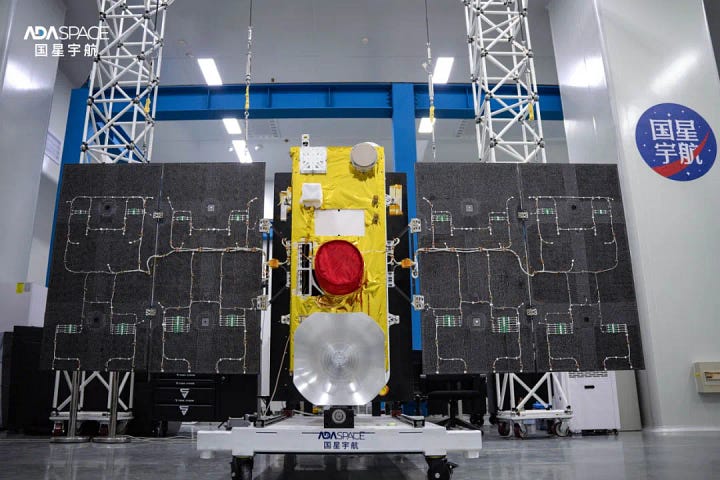ADA Space Eyes Launching 2,800 AI Satellites
Thousands of computing satellites stand to improve space-based data processing.
ADA Space, also known as Chengdu Guoxing Aerospace Technology Co Ltd (成都国星航天科技有限公司) and shortened to Guoxing Aerospace, saw the first 12 satellites for its space computing satellite constellation blast off on May 14th via a Long March 2D.
The 12 satellites are part of a planned constellation dubbed “Three-Body Computing Constellation”, developed with Zhejiang Lab (之江实验室). The two companies are said to be working toward a 2,800-satellite constellation that has been approved by the International Telecommunication Union. This constellation aims to integrate space and ground computing into a single AI infrastructure, accelerating intelligent applications across multiple industries. Part of the company’s initial public offering for the Hong Kong Stock Exchange states details on the constellation succinctly:
“[Leveraging] the advanced capabilities of our AI computing satellites with continuous iteration, we are actively advancing the Star-Compute Project (“星算計劃”), seeking to create a space-based computing network consisting of 2,800 AI computing satellites. As of the Latest Practicable Date, the orbits and spectrum of the 2,800 AI computing satellites under the Star-Compute Project had been officially approved and announced by the International Telecommunication Union, marking a significant milestone in establishing our global presence and influence.”
“We expect to complete and operationalize a globally integrated space—ground AI infrastructure in Stage III to provide satellite-based solutions and satellite-based computing services. This infrastructure is designed to interconnect space-based computing network supported by AI satellites with ground-based computing network, forming an integrated infrastracture that enables high-quality algorithm deployment, seamless satellite remote sensing data processing, advanced computing power and efficient communication between space and ground. Through this infrastructure, we aim to drive the intelligent transformation of industries worldwide, enhancing our industry impact and solidifying our market position.”
The first 12 satellites are expected to serve as the technical and operational prototype for the full constellation. Each satellite is equipped with onboard artificial intelligence processors, laser inter-satellite communication links capable of speeds up to 100 gigabits per second, and space-based computing systems capable of performing up to 744 trillion operations per second. The satellites also carry large-scale AI models with up to eight billion parameters, along with Earth observation instruments.
These capabilities are said to allow the spacecraft in the constellation to perform real-time data processing in space, significantly reducing the need for ground-based analysis, and support applications such as remote sensing, digital twin environments, environment monitoring, and emergency responses.


In order to have the desired thousands of satellites in orbit, ADA Space is utilizing two different designs. One satellite design, called ‘type one’, is stackable, allowing numerous spacecraft of the same design to be placed on top of each other. The other design, called ‘type two’, is a more conventional CubeSat, allowing it to be a secondary payload for other missions with extra payload capacity left. Utilizing two different designs should allow ADA Space to pursue more launch opportunities to deploy its 2,800 satellites.
The “Three-Body Computing Constellation” has no single backer providing support to either ADA Space or Zhejiang Lab. Instead, the constellation is choosing to partner with Chinese tech giant Alibaba Group, Kepu Cloud, and iSoftStone. These partnerships would allow a substantive collective backing as well as reputability once commercialization is desired.



